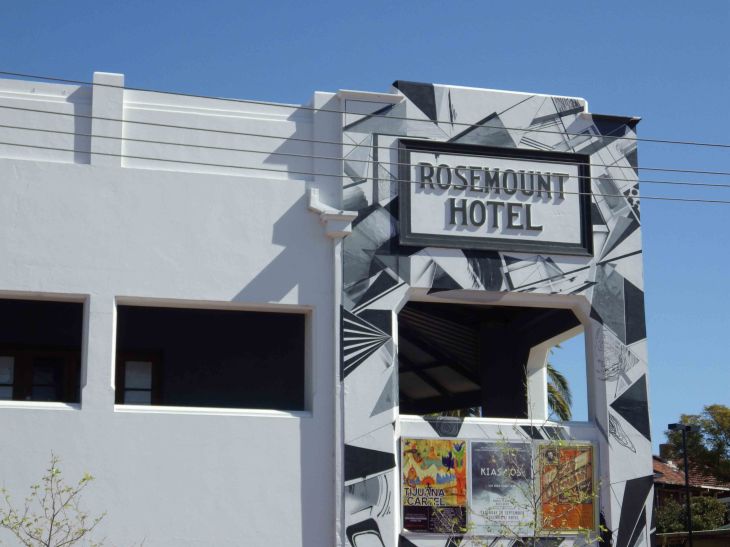
What could be better on a cold winter Saturday afternoon than drinks with friends in a few different venues? Especially if you can introduce them to Perth’s heritage and make yourself look clever at the same time. Welcome to the Dodgy Perth ‘Beer and Buildings’ self-guided tour. At a mere 2km you will pack in a number of drinking establishments en route. We recommend pacing yourself carefully.
Drink One: The George, 216 St George’s Terrace
Meet around 2pm. You can start earlier, but a few later venues don’t open until 3pm on a weekend. When you’ve finished your first drink of the tour, step outside and look at the buildings opposite. None of them are heritage buildings, but a lot have classical references in their pillars. You’re going to see a lot of pillars today, so just soak in the fact that architects have never stopped using them.
Walk towards the CBD, passing The Cloisters (1858) on your left. Designed by Richard Roach Jewell, it was originally a secondary school. Keep going until you are opposite Newspaper House.
Drink Two: Newspaper House, 125 St George’s Terrace

Discover more about this 1933 building by clicking here. Then go behind the place and take a couple of flights of stairs up to Bob’s Bar. This rooftop venue (it has a retracting roof if the weather is not ideal) will provide an opportunity for a wide range of beers.
When you return to St George’s Terrace, keep going in the same direction, cross over William Street and take a right turn into Howard Street.
Drink Three: Haynes, Robinson & Cox Building, 18-20 Howard Street

Discover more about this 1907 building by clicking here. Then take the small laneway opposite to find Helvetica, one of Perth’s top providers of fine whiskeys.
Afterwards, return to St George’s Terrace and keep going towards Barrack Street. Cross over, and enter Stirling Gardens, heading towards the Supreme Court.
Interlude: The Old Courthouse, Stirling Gardens

Discover more about this 1837 building by clicking here. Don’t worry too much about your next drink, it’s coming soon.
Return to St George’s Terrace and stop opposite the State Buildings (now COMO).
Drink Four: State Buildings, St George’s Terrace

Discover more about this 1890 building by clicking here. Then enter Petition Bar, either through the St George’s main arch, or round the side on Barrack Street. We recommend the tasting tray of four different beers, but your mileage may vary.
When you’ve finished the last drop of beer or wine, leave by the Barrack Street exit and head north. You will pass the Town Hall (1870) on your right, and now comes the longest stretch without beer in the entire tour. Keep going over the bridge, past the Court Hotel, until you reach Dominion League. It may be best to cross over to other side of Beaufort Street to get a good view.
Drink Five: United Friendly Societies Dispensary, 84 Beaufort Street

Discover more about this 1911 building by clicking here. A great wine list and a cosy atmosphere inside, although it can get a little busy as the evening goes on.
On the home stretch now. Leave the Dominion League, turn left towards the pedestrian crossing, go over Beaufort Street and head into the Cultural Centre. For the best view of the PICA Building look for a raised area to your right, just in front of the library.
Drink Six: Government School, 51 James Street

Discover more about this 1897 building by clicking here. Now chill out for the rest of the evening at the PICA Bar, knowing you’ve discovered all about Perth’s heritage, had a healthy walk, and possibly (just possibly) more than a single drink.
Since the tour ends here, you will find public transport back home is within a short stroll, whether you need a bus, train or Uber.












